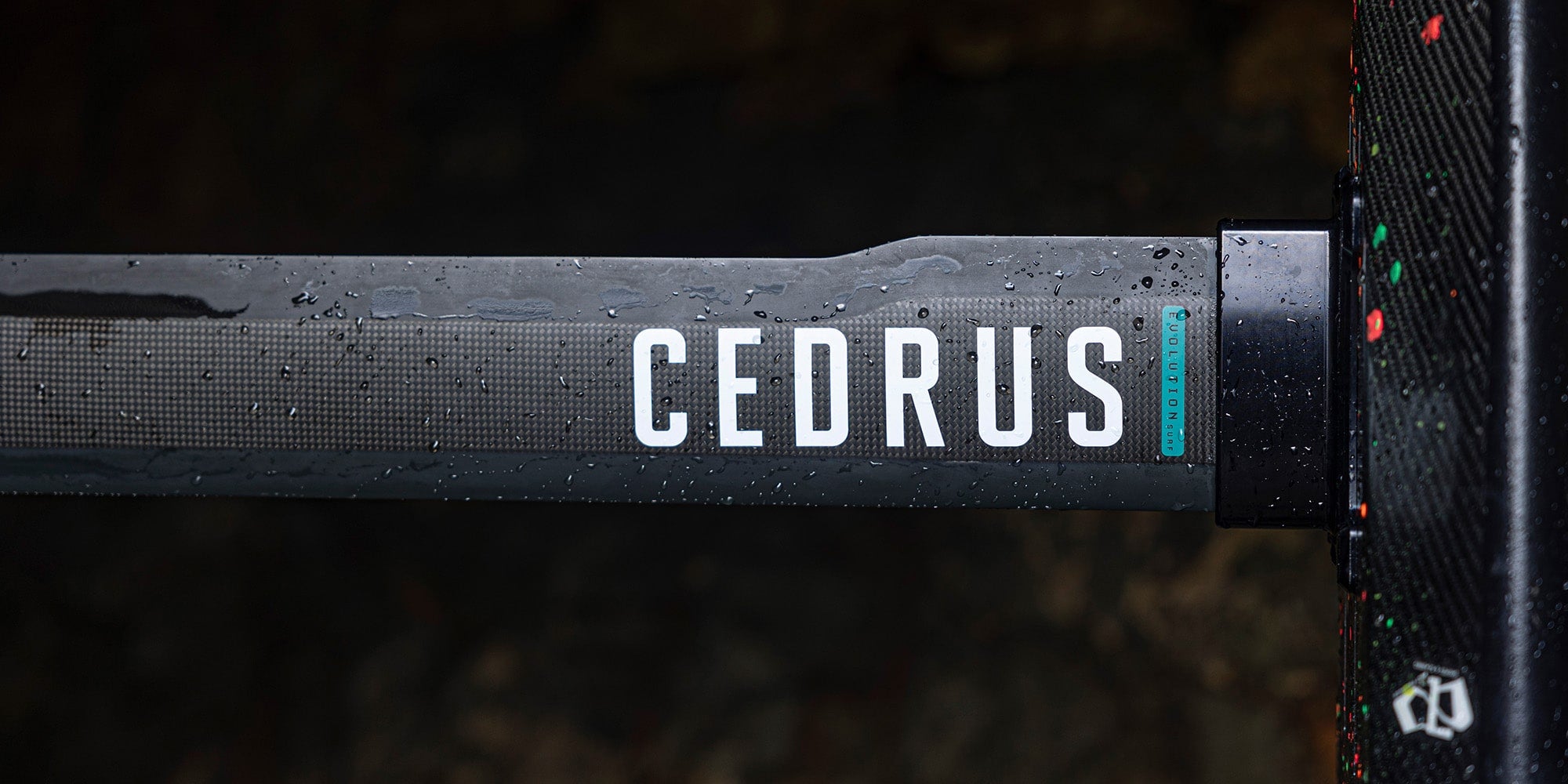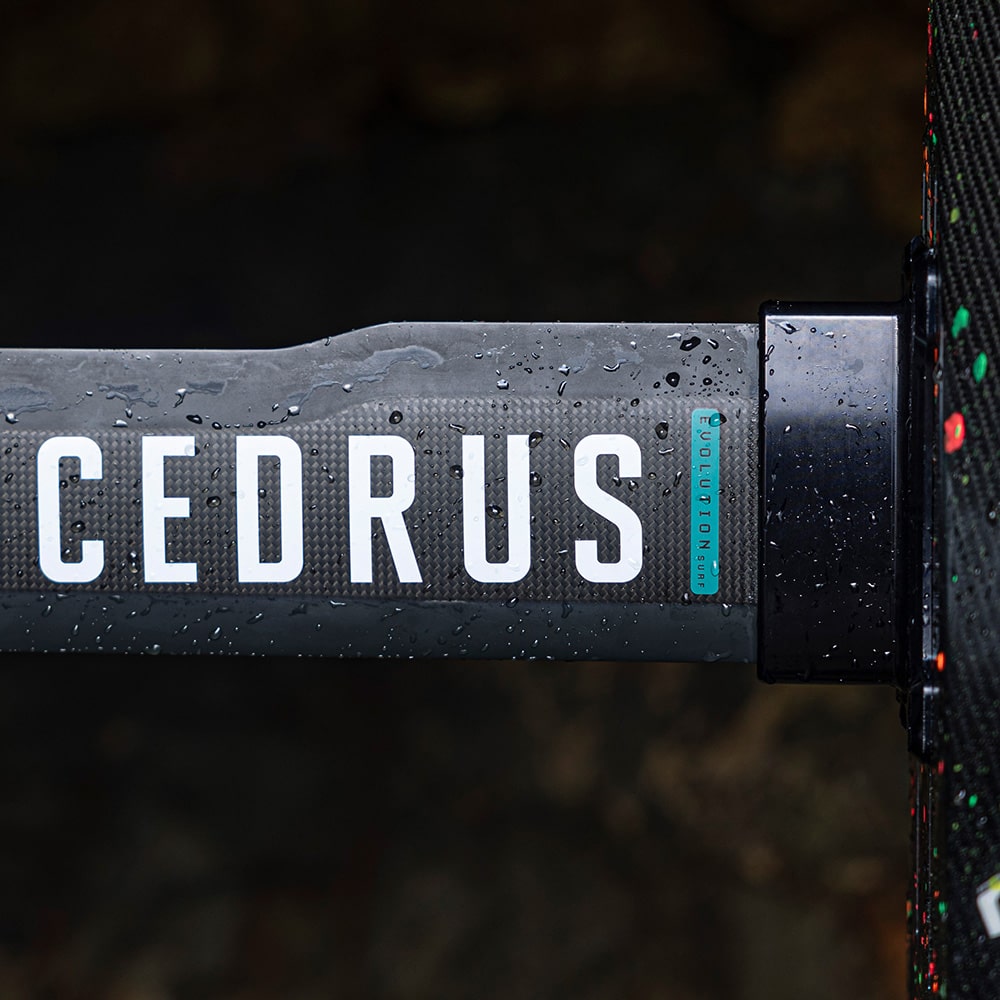This mast is made for you.
Treat it well, and it will last a lifetime. Thank you for your trust and for giving us the opportunity to be a part of your foiling journey. Our goal was to design a mast that didn’t need a user manual, but we want to share these important tips.
The mount has been torqued to spec (20N*m) at our facility. The new custom 6/4 Titanium hardware has eliminated corrosion between the head of the screw and mount, and there is no need to tighten, loosen, lubricate, or remove the mount or screws. Some do prefer to remove the mount for travel, and that is fine. Just make sure the screws are tightened (but not over-tightened) when you re-assemble. A little Lanocote, Tefgel, or grease along the stainless adapter pins can help prevent corrosion, salt buildup, and ensure adapters remain easily removable. Grease on the threads of hardware is not necessary. The supplied screws do have patches of thread locker; feel free to apply additional if it wears away with use or you do experience loose hardware, which you shouldn’t with an adequate torque level of 20N*m.
When connecting your adapter, ensure the two precision-fit pins are inserted perfectly parallel to the length of the mast. If it starts to bind, remove and try again. Do not force anything! Check for sand, salt crystals, or other debris in the event the adapter is difficult to attach. we recommend dis-assembly during extended periods of non-use to prevent corrosion or salt crystals from forming and making removal more difficult. If the adapter does become difficult to remove, simply unscrew the adapter hardware, reconnect the fuselage, and lightly tap the wing and tail portions as close to the adapter as possible to keep the pins parallel as they back out. Keep the joint free of sand and debris, and clean with compressed air, pipe cleaners, or water to prevent scratching of the surfaces when connecting adapters. Again, never use excessive force when connecting or removing adapters. Contact us if it feels too difficult to remove or install, and never attempt to pry the adapter off.
Do not over-torque hardware, especially titanium! Titanium is not as ductile as stainless steel, and will fracture if overloaded. The primary loadpath of the Evolution adapter interface is the 10mm steel pins, so titanium hardware is not subject to bending loads. 20N*m is a fair amount of torque. Think pretty hard with a small hand tool, or 20lbs at the end of an 80inch socket wrench. If you suffer from loose hardware, contact us immediately for diagnosis. We have not had a single report of loose hardware with the new Evolution adapter interface. Evolution masts and adapters were engineered to eliminate lose bolts. Loose hardware indicates damage, wear, or improper assembly.
Ensure proper fuselage connection hardware is used. It is critical that 16-20mm of threads are engaged with the adapter when connecting your fuselage. We do not supply fuselage connection hardware because brands are constantly introducing new designs and we cannot be liable by supplying the wrong hardware. Check how much of the screw protrudes from the fuselage before connecting to the mast/adapter. Use M6 foil connections at your own risk. Cedrus adapters connect using a combination of M8 and M10 hardware, resulting in an extremely stiff and strong connection. Foils that connect using significantly weaker M6, M7, or equivalent hardware are at risk of loss. Contact us with any questions or concerns.
Store the mast dry, ideally in conditioned space. We recommend a light rinse and rub with your hands to wipe away any salt buildup or residual residue. Water can become trapped in the mount when stored outside and upside down, which can lead to coating damage. As with all carbon/aluminum hybrid joints such as OEM wings connected to aluminum fuselages (Armstrong, Axis, Takuma, etc), do not leave Cedrus adapters inserted into carbon fuselages when not in use. Galvanic corrosion will occur between the two dissimilar materials; the carbon will win. The fuselage or adapter will be eaten away in time, or worse the wings will seize to the fuselage. We do recommend applying a coat of grease to the heads of Armstrong and GoFoil fuselages to prevent galvanic corrosion between the front wings and the fuselage. Be careful with Foil Drive cable mounting tape! Aggressive solvents and adhesives on certain tapes can damage the coating after extended contact. Damage caused by Foil Drives or associated mounting tapes is not considered a warranty item.
Cedrus masts do require a little bit more maintenance than some other setups. These actions are equivalent to lubing your bike chain, waxing your skis, sharpening your edges, or changing the oil in your car. You can certainly “ride it hard and put it away wet,” but please understand that we cannot be responsible for any issues related to excess corrosion or damage due to abuse. At this point, we have nearly 6 year old masts still in service all over the world, so we know our material choices are sound. Our warranty rate is less than 1%, and we have been able to repair pretty much every mast following frozen hardware, impact, or damage to the edges. That being said, please take care of your mast, and it will take care of you!
In closing, we get it; bad things happen. We hit sea-life, run into the reef, drop stuff out of our car, or break leashes in the surf. We are here to help, and we will always do our best to repair damaged equipment at a fair price. Please do NOT try to fix damage yourself, as this can only make our job harder. We’ve gotten really good at removing seized bolts, but if you break a drill bit in the mast it could lead to a complete loss. Furthermore, if you do see areas of surface corrosion or oxidization, do not scrub or clean it away. The oxide layer acts as natural protection, and if you wipe it away, the damage will simply progress.
Thanks again for your support, and please reach out with any questions or feedback!



